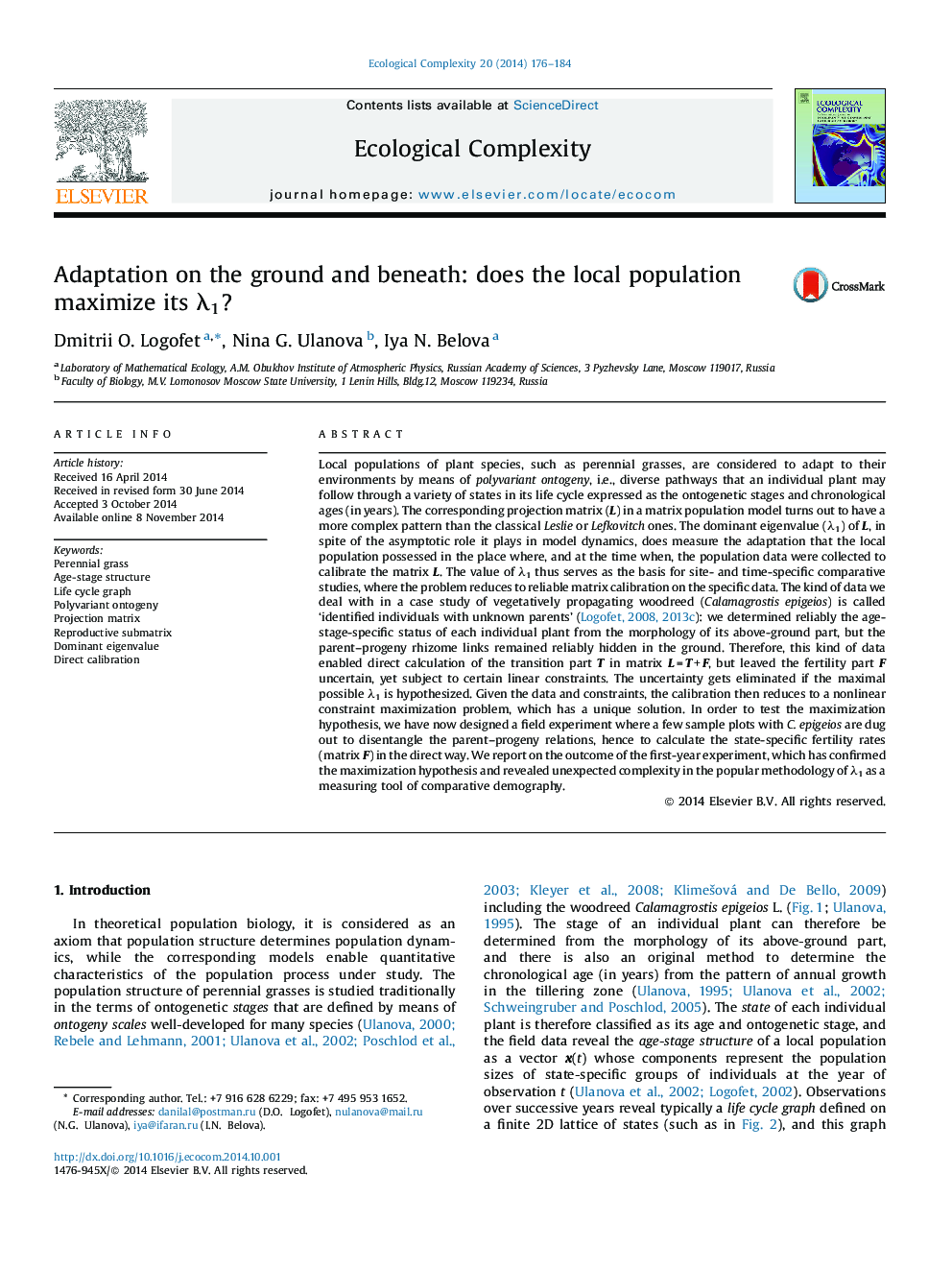| Article ID | Journal | Published Year | Pages | File Type |
|---|---|---|---|---|
| 4372367 | Ecological Complexity | 2014 | 9 Pages |
•Projection matrix for age-stage-structured population needs a new kind of data.•New experiment design to disentangle parent–progeny links in Calamagrostisepigeios.•Experiment enables the direct calculation of age-stage-specific reproduction rates.•Experiment confirms the maximization hypothesis in a modified formulation.•Experiment reveals the limits to the accuracy of λ1 as a measuring tool for comparison.
Local populations of plant species, such as perennial grasses, are considered to adapt to their environments by means of polyvariant ontogeny, i.e., diverse pathways that an individual plant may follow through a variety of states in its life cycle expressed as the ontogenetic stages and chronological ages (in years). The corresponding projection matrix (L) in a matrix population model turns out to have a more complex pattern than the classical Leslie or Lefkovitch ones. The dominant eigenvalue (λ1) of L, in spite of the asymptotic role it plays in model dynamics, does measure the adaptation that the local population possessed in the place where, and at the time when, the population data were collected to calibrate the matrix L. The value of λ1 thus serves as the basis for site- and time-specific comparative studies, where the problem reduces to reliable matrix calibration on the specific data. The kind of data we deal with in a case study of vegetatively propagating woodreed (Calamagrostis epigeios) is called ‘identified individuals with unknown parents’ ( Logofet, 2008 and Logofet, 2013c): we determined reliably the age-stage-specific status of each individual plant from the morphology of its above-ground part, but the parent–progeny rhizome links remained reliably hidden in the ground. Therefore, this kind of data enabled direct calculation of the transition part T in matrix L = T + F, but leaved the fertility part F uncertain, yet subject to certain linear constraints. The uncertainty gets eliminated if the maximal possible λ1 is hypothesized. Given the data and constraints, the calibration then reduces to a nonlinear constraint maximization problem, which has a unique solution. In order to test the maximization hypothesis, we have now designed a field experiment where a few sample plots with C. epigeios are dug out to disentangle the parent–progeny relations, hence to calculate the state-specific fertility rates (matrix F) in the direct way. We report on the outcome of the first-year experiment, which has confirmed the maximization hypothesis and revealed unexpected complexity in the popular methodology of λ1 as a measuring tool of comparative demography.
Graphical abstractFigure optionsDownload full-size imageDownload as PowerPoint slide
